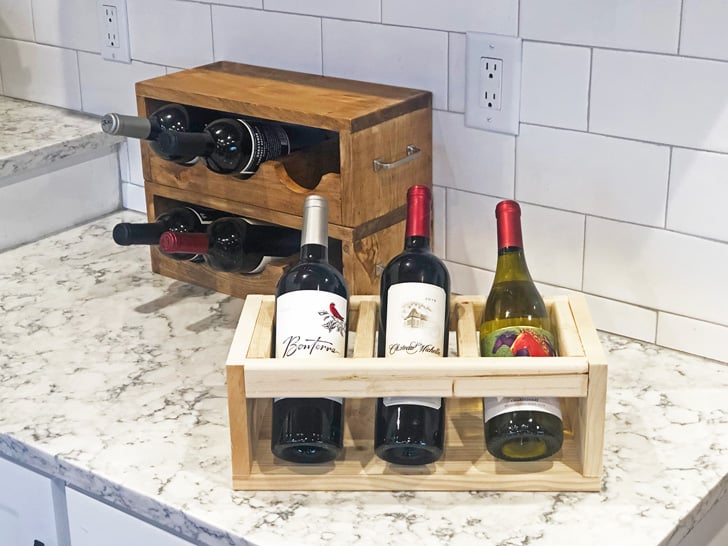
This little wood wine holder stacks, stores, and you can use the top to serve! It works as a gift box too for the wine lover. Quick and easy DIY project that you can build with off the shelf pine boards and nail together. Step by step plans from Ana-White.com
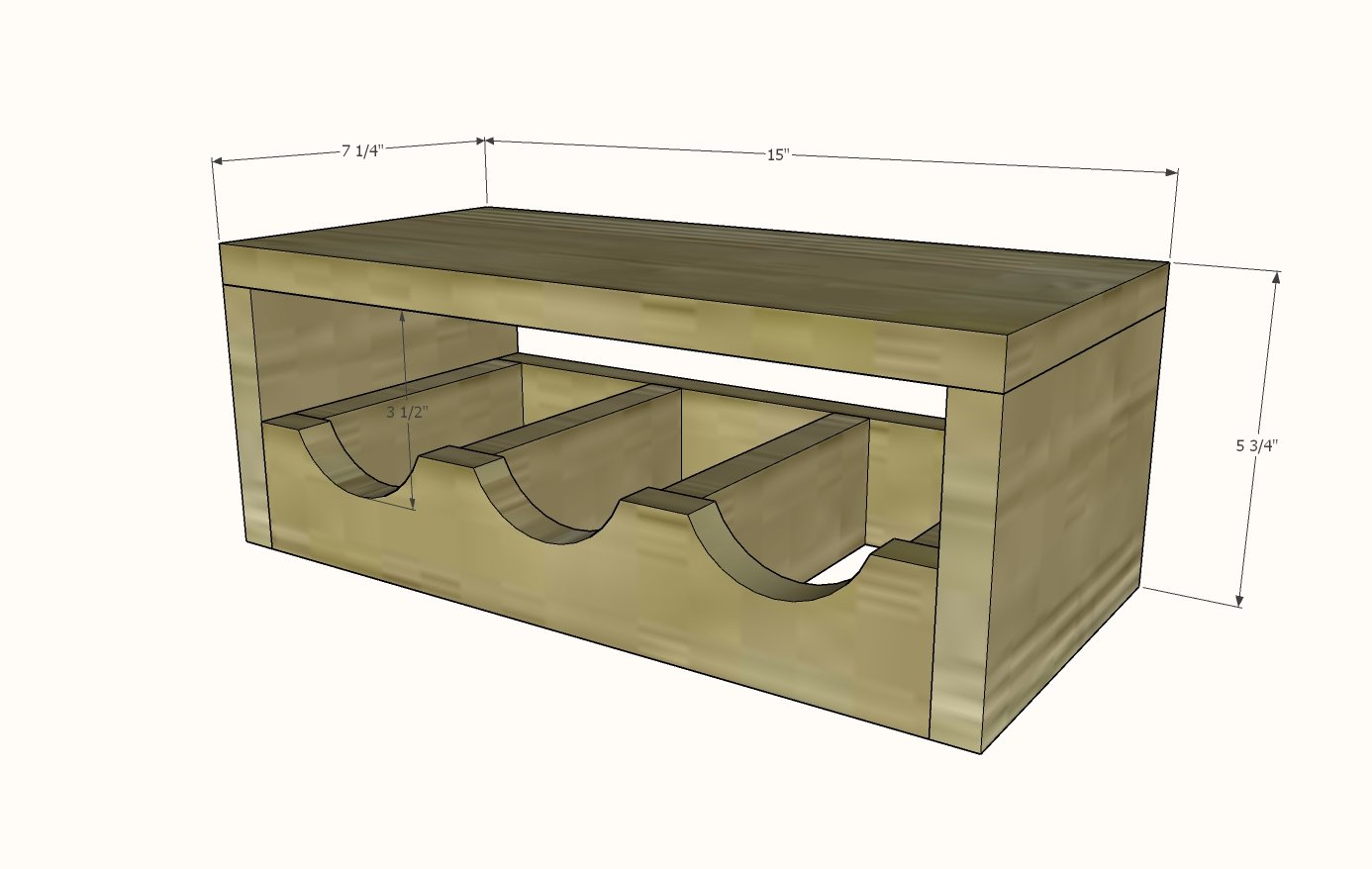
Preparation
- 25 inches (a little more than 2 feet) of 1x8 board (can be in smaller pieces if using up scrap wood)
- 50 inches (a little more than 4 feet) of 1x3 board (also can be smaller piece if using up scrap wood)*
- 1 - 1/4" brad nails
- wood glue
- scroll blade for jigsaw recommended
*Can substitute for 1x2s and not cut out the arches for the wine bottles
- 2 - 1x8 @ 5"
- 1 - 1x8 @ 15"
- 2 - 1x3 @ 13-1/2"
- 4 - 1x3 @ 5-3/4"
Cut boards with a compound miter saw (preferred) or a circular saw.
NOTE: This wood wine holder should not be moved when in the stacking mode (open bottom) as there is a possibility the wine could fall out the bottom of the wine holder. If you wish to transport this way, make sure you add a bottom on to the wine holder.
For permanent stacking or stacking more than two high, we recommend screwing or nailing the wine holders together for added security.
Instructions
Step 2
Step 3
For the top to serve food off of, also add a coat of varnish.
If you are planning on cutting on the top, do not stain - just use butcher block or other food grade oil to seal.


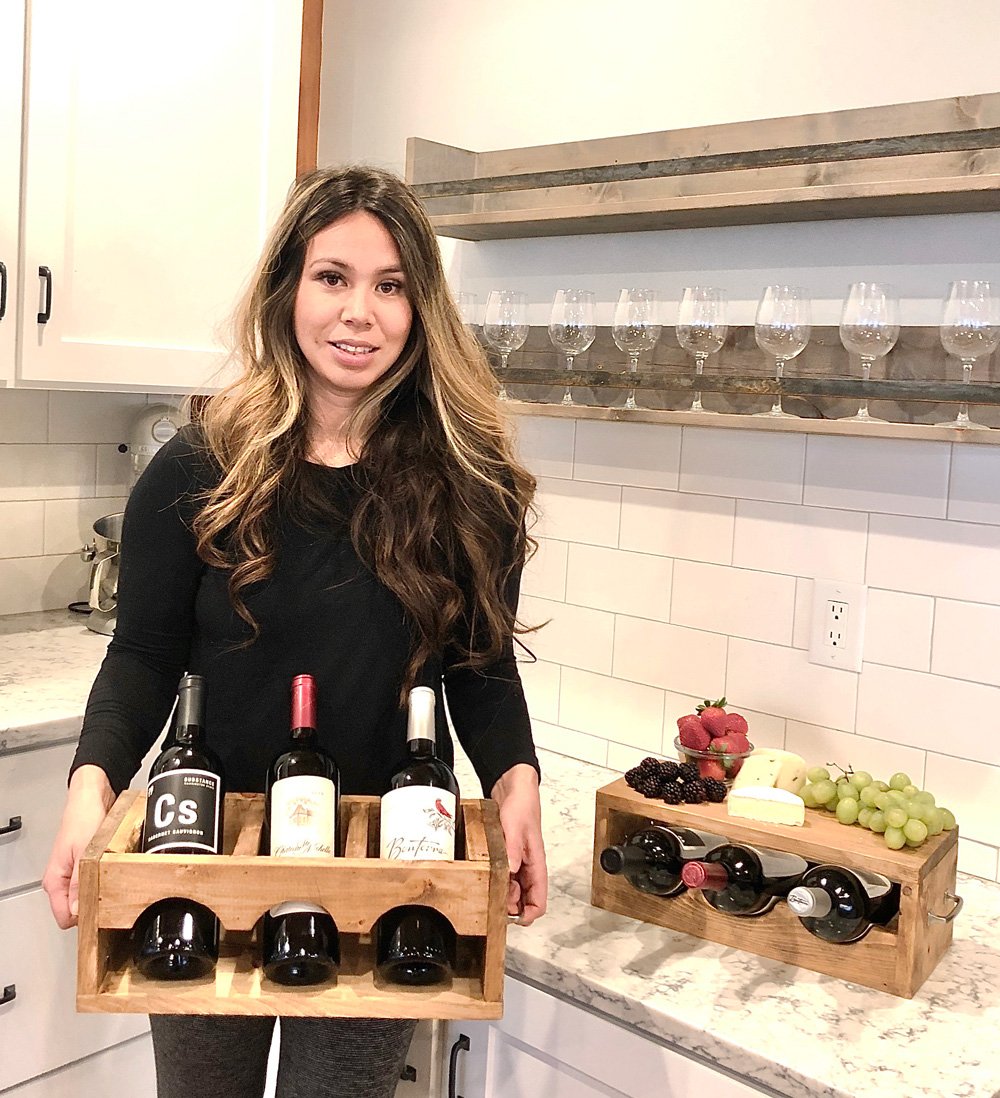

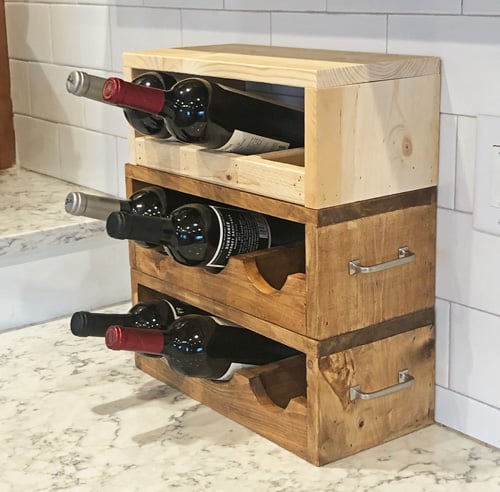









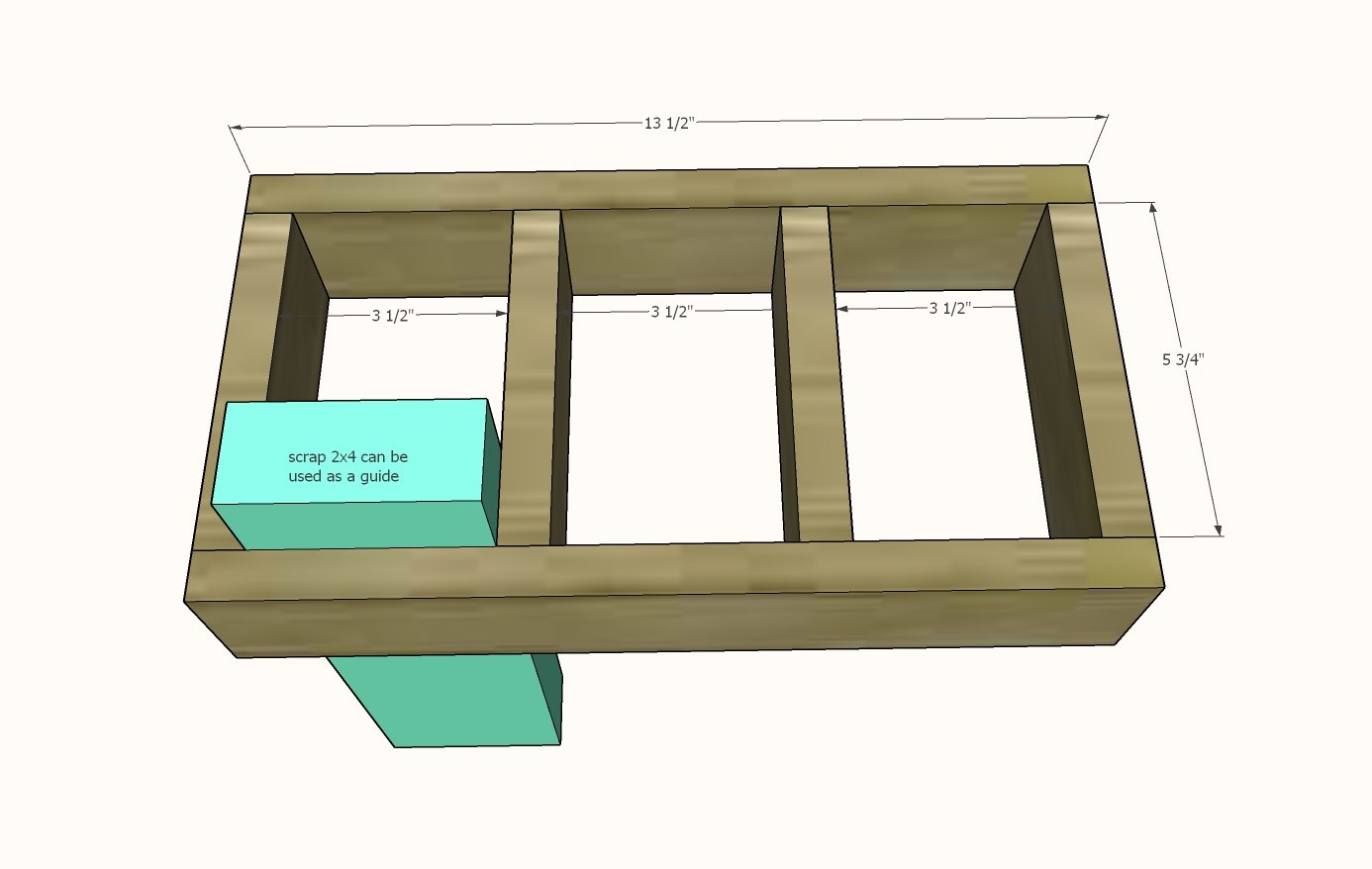
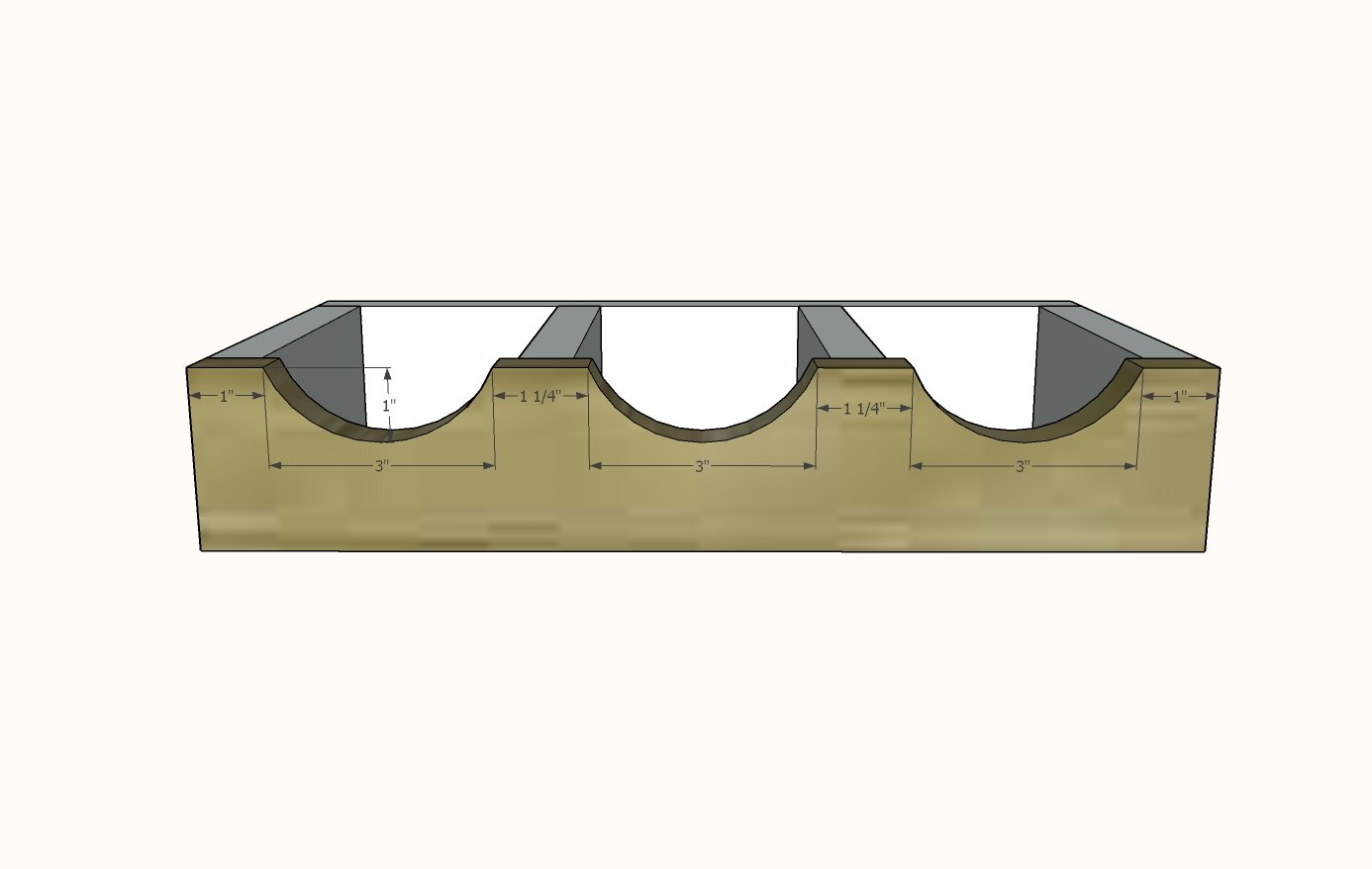
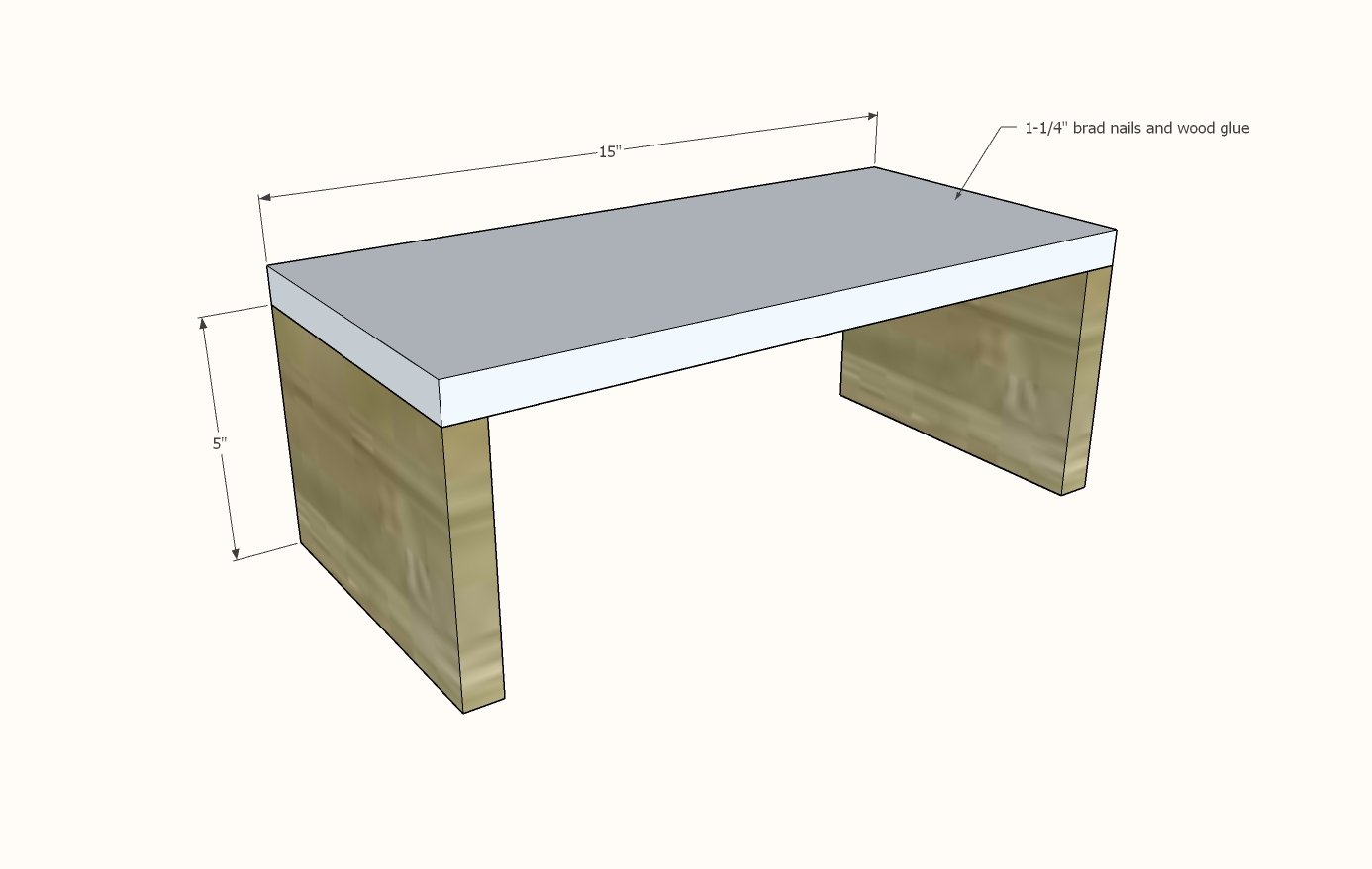
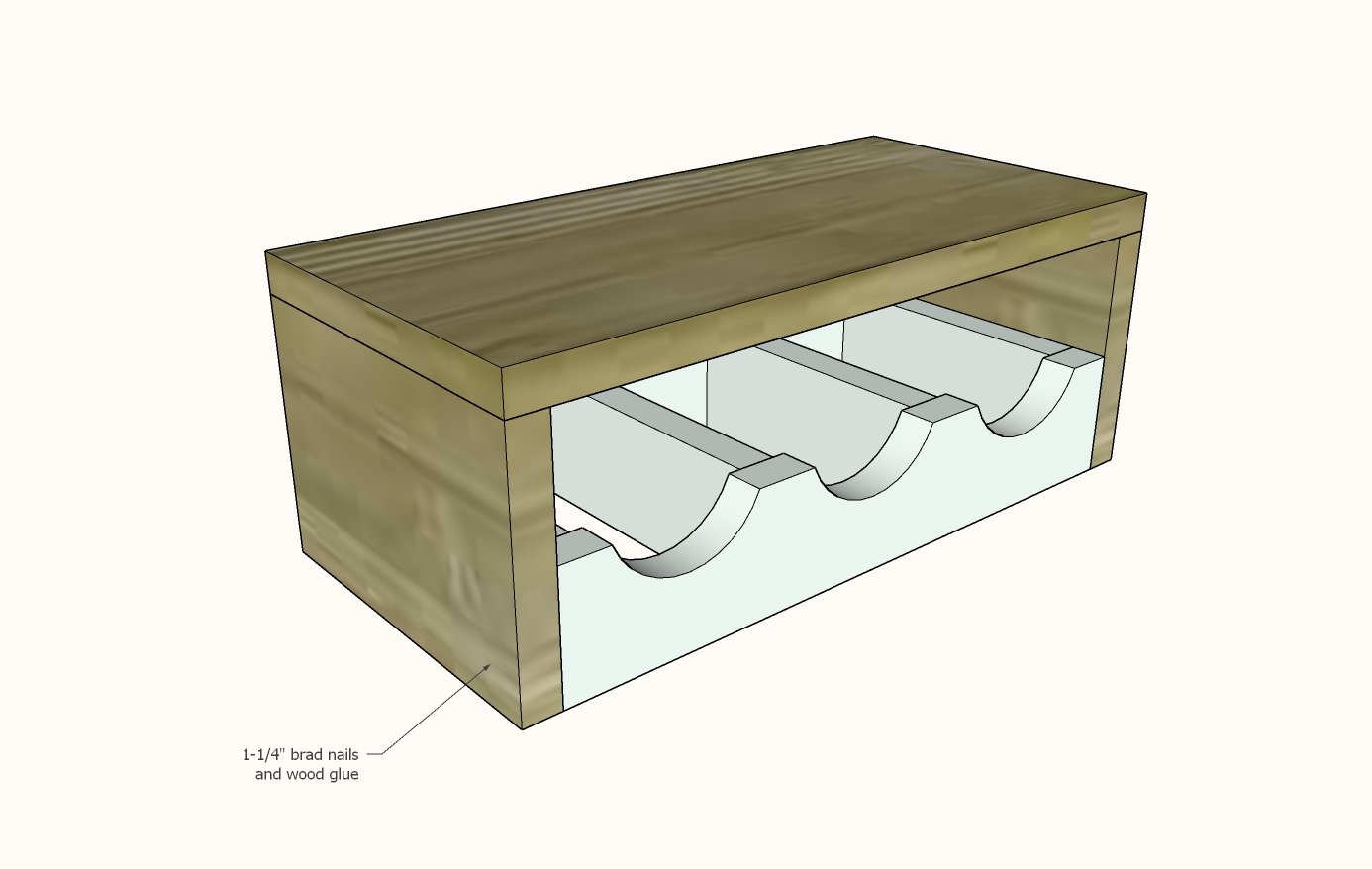
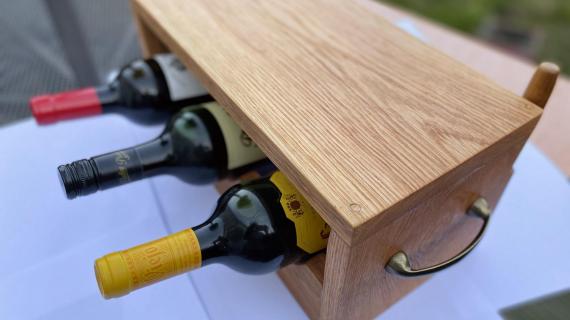
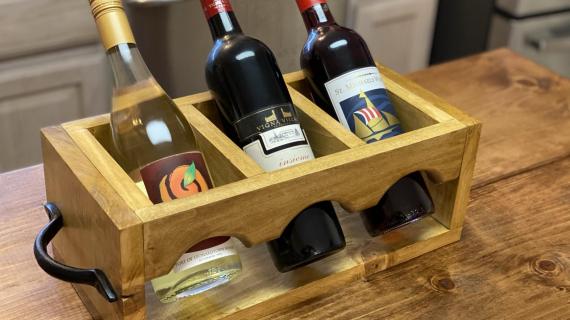
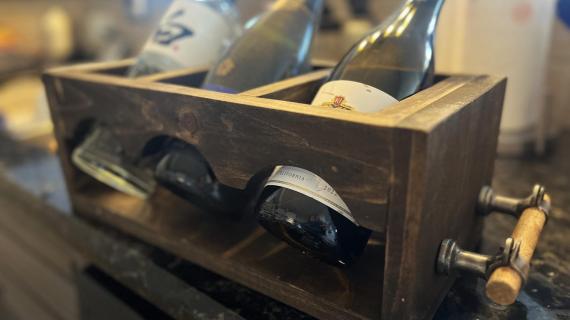
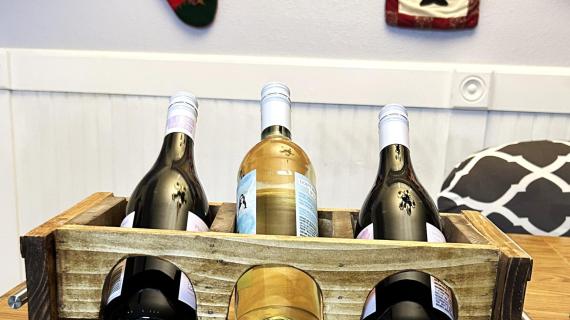
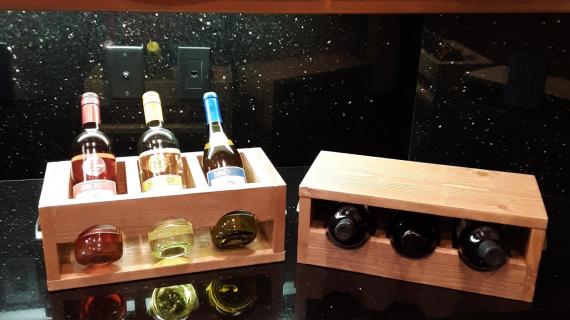

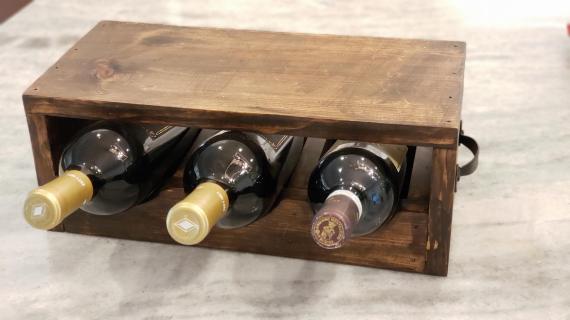

Comments
robertj996
Sun, 12/08/2019 - 17:43
How do you download…
How do you download printable plans?
NOLAbuilder
Tue, 12/10/2019 - 07:26
Joinery
Ana what do you recommend if I don’t have a brad nailed? I plan to treat the wood with butcher block oil (no stain or paint).
SilentG
Mon, 08/31/2020 - 14:57
Can't find download button
How do you download this plan?
CRISTINA@PONTES
Wed, 02/24/2021 - 08:28
Hi! I´m from Portugal can…
Hi! I´m from Portugal can you convert the measure into a centimeter or can you tell me where to convert? Thanks my dad will love
thanks in advance